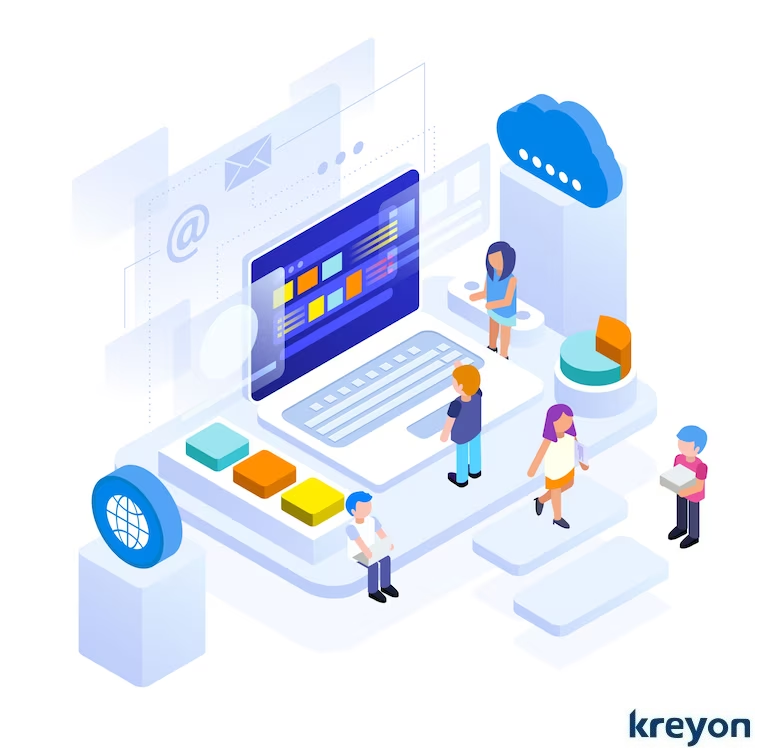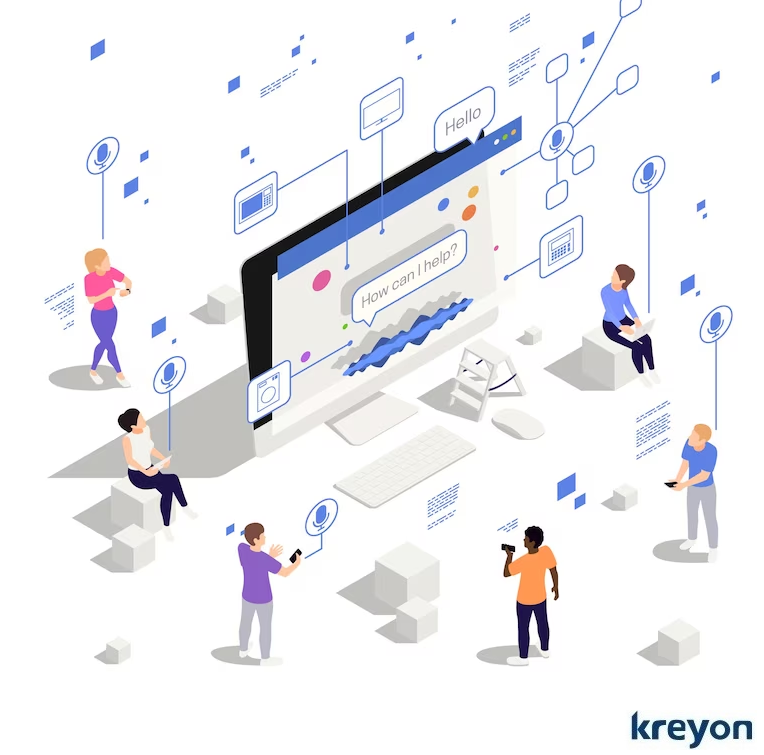HR Digitalization for Flexible Work: A Step by Step Guide on How to Approach it!

In an era marked by remote work, shifting employee expectations, and evolving workplace dynamics, HR digitalization has taken center stage. Organizations worldwide are recognizing the need to adapt to the demands of flexible work arrangements and employee-centric policies.
Flexible work arrangements are becoming increasingly popular, as employees seek more control over their work-life balance. A recent survey by Owl Labs found that 83% of employees say that flexible work arrangements are important to them, and 62% say that they would be willing to take a pay cut to have more flexible work options.
HR digitalization can help businesses to support flexible work arrangements by automating processes and providing employees with the tools they need to work remotely or on flexible schedules.
By digitizing HR processes, businesses can improve efficiency, reduce costs, and create a better employee experience. Here is a step-by-step approach to HR digitalization tailored for a flexible work environment.
Understanding HR Digitalization for Flexible Work
HR digitalization refers to the strategic integration of digital technologies into HR processes to streamline operations, enhance employee experiences, and foster agility.
In the context of flexible work, digitalization becomes a powerful tool to support remote teams, ensure seamless collaboration, and meet the diverse needs of modern employees.
Step 1: Assess Your Current HR Landscape
Before embarking on HR digitalization for flexible work, it’s essential to conduct a comprehensive assessment of your current HR processes. Here’s how to begin:
Process Audit: Evaluate existing HR processes, from recruitment and onboarding to performance management and offboarding. Document each step and identify pain points.
Feedback Collection: Engage HR professionals, managers, and employees to gather feedback on current processes. Their insights can uncover inefficiencies and areas for improvement.
Technology Inventory: Take stock of the HR technologies you currently use. Assess their compatibility with flexible work requirements.
Consider the following questions when assessing your current HR processes:
How easy is it for employees to request flexible work arrangements?
How do employees access HR information and services when they are not in the office?
How efficient are your current HR processes from recruitment to exit?
Are your HR processes compliant with all applicable laws and regulations?
Step 2: Define Clear Objectives

To drive successful HR digitalization for flexible work, establish clear objectives that align with your organization’s goals. Consider the following objectives:
Enabling Remote Work: Implement technologies and policies that support remote work seamlessly.
Enhancing Employee Experience: Improve the experience for remote and onsite employees by providing user-friendly tools and streamlined processes.
Ensuring Data Security: Prioritize data security measures to safeguard sensitive HR information in a distributed work environment.
Your digitalization plan should outline your goals, timelines, and budget. Consider the following factors when developing your plan:
Your business goals
The needs of your employees
The resources that you have available
The timeline that you want to follow
The budget that you have available
Once you have developed your digitalization plan, you can start to implement it.
Step 3: Phased Implementation
It is important to implement your digitalization plan in a phased approach. This will help to minimize disruption and ensure that the new processes are working properly before you move on to the next phase.
Start by digitizing the most critical HR processes first. Once these processes are digitized, you can move on to digitizing other less critical processes.
Choosing the appropriate HR software is pivotal to achieving your flexible work objectives. Factors to consider include:
Cloud-Based Solutions: Opt for cloud-based HR software for accessibility and scalability, ideal for remote teams.
Integration Capabilities: Ensure that the chosen software can seamlessly integrate with other critical systems, such as payroll and benefits administration.
User-Friendly Interface: Prioritize software that is intuitive and user-friendly to enhance adoption rates among employees.
Key Outcomes: Spell out clear outcomes that you desire for your organisation and ensure your HR software tracks these.
Step 4: Develop an Implementation Strategy

An effective implementation strategy is essential to the success of your HR digitalization efforts for flexible work. Consider the following key components:
Stakeholder Engagement: Involve HR teams, IT professionals, managers, and employees in the planning and execution phases. Their insights are invaluable for a smooth transition.
Comprehensive Training: Provide comprehensive training to ensure that all users can effectively utilize the new tools and systems.
Consider the following metrics when evaluating your digitalization efforts:
Employee satisfaction
Employee engagement
Employee productivity
HR process efficiency
HR cost savings
Step 5: Prioritize Data Security and Compliance
As remote work becomes more prevalent, data security and compliance take on heightened significance. Ensure that your HR digitalization strategy includes:
Data Encryption: Implement robust encryption protocols to protect sensitive HR data transmitted over remote networks.
Access Control: Define and enforce user roles and permissions to restrict access to confidential information.
Compliance Checks: Regularly audit your HR digitalization processes to ensure compliance with data protection regulations relevant to your industry and location.
Step 6: Embrace Change Management for Flexible Work

Managing change is critical, especially when transitioning to a flexible work model. Here’s how to navigate the challenges:
Communication: Clearly communicate the rationale behind HR digitalization for flexible work. Highlight how it benefits employees and the organization.
Training and Support: Provide ongoing training and support to address any challenges or concerns employees may have.
Feedback Loop: Create channels for employees to share feedback, enabling continuous improvement.
Use a cloud-based HR platform: This will give your employees access to HR information and services from anywhere, at any time.
Automate repetitive tasks: Such as time off requests and performance reviews. This will free up HR staff to focus on more strategic initiatives.
It is important to communicate with your employees throughout the digitalization process. Keep them informed of your progress and get their feedback.
This will help to ensure that the new processes meet the needs of your employees and that the transition is a success.
Step 7: Embrace Analytics for Continuous Improvement
Measure and track your results. It is important to track the impact of your HR digitalization efforts on employee engagement, productivity, and other key metrics.
HR digitalization is an ongoing journey. To ensure long-term success, implement the following practices:
Monitoring: Continuously monitor your HR processes to identify areas for optimization.
HR Analytics: Leverage HR analytics to gain insights into employee performance, engagement, and retention.
KPIs: Define key performance indicators (KPIs) to track the impact of HR digitalization on flexible work outcomes, such as employee satisfaction and productivity.
Employees need to know what is expected of them when working remotely or on flexible schedules.
The HR Digitalization makes it easier for people to collaborate effectively, focus on work that matters the most and build things that create valuable impact for companies as well as their employees.
Conclusion:
HR digitalization for flexible work is not just a trend; it’s a strategic imperative. By following this step-by-step guide, organizations can adapt to the changing workplace landscape, empower their employees to work flexibly, & achieve sustainable success in the digital age.
Embrace HR digitalization as a means to foster collaboration, support remote teams, and enhance employee experiences in the new world of work.
Kreyon Systems provides AI-based HR Software for improved employee onboarding, HR processes automation for remote work, recruitment & performance reviews. For any queries, please get in touch with us.
